
Discover Native African Succulents: Diverse & Hardy Garden Species!
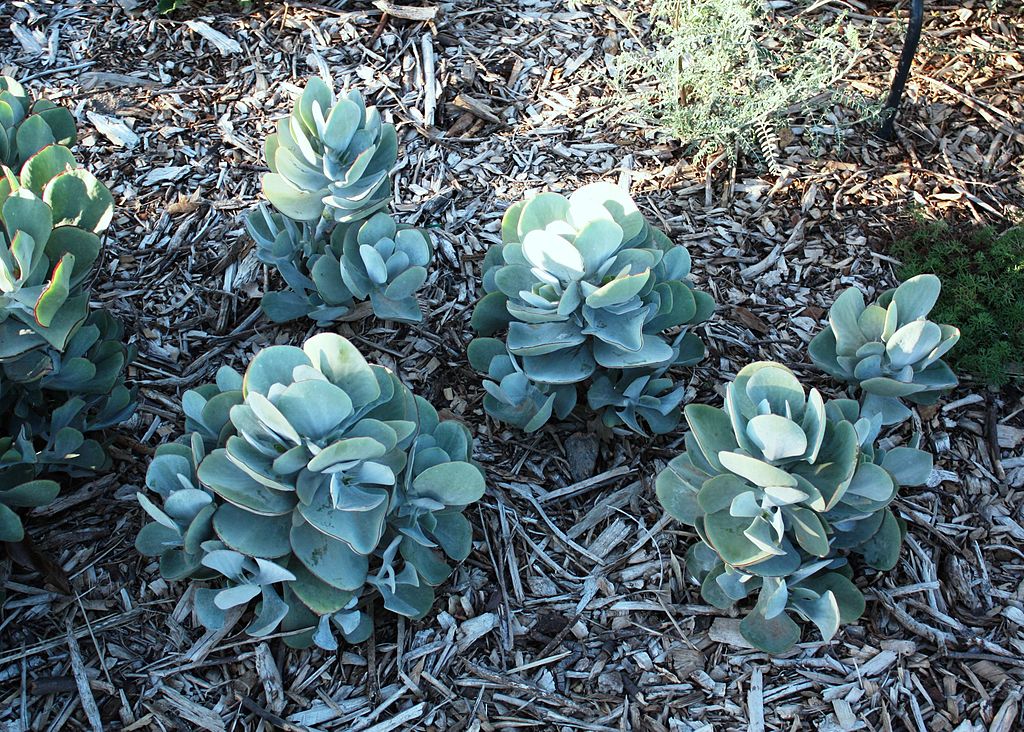
Africa is known for its rich biodiversity and stunning landscapes, and one of the hidden gems of its plant kingdom is native African succulents. These fascinating plants have adapted to survive in the harsh conditions of the African continent, making them hardy and resilient garden species. From the deserts of Namibia to the savannas of South Africa, African succulents offer a unique and diverse range of shapes, colors, and textures that can enhance any garden.
We will take a closer look at the world of native African succulents and explore their beauty and practicality in garden design. We will delve into the different species and varieties that can be found across the African continent and highlight their unique characteristics and growing requirements. Whether you are a seasoned succulent enthusiast or just starting your gardening journey, this article will provide you with valuable insights and inspiration to incorporate native African succulents into your own garden.
- Explore the wide variety of native African succulents for your garden
- Find out how to grow these hardy plants in your own backyard
- Learn about the unique characteristics of each species and their native habitats
- Discover the beauty and resilience of African succulents in your garden
- Create a diverse and vibrant garden with these native African succulents
- Enhance your garden with low-maintenance and water-wise plants
- Enjoy the stunning colors and shapes of these African succulents
- Support conservation efforts by growing native African succulents
- Share your love for African succulents with fellow garden enthusiasts
- Experience the joy of cultivating and caring for these unique garden species
- Frequently Asked Questions
Explore the wide variety of native African succulents for your garden
Native African succulents are a treasure trove of unique and hardy plant species that can add a touch of exotic beauty to any garden. These fascinating plants have adapted to thrive in the harsh conditions of Africa's diverse landscapes, making them excellent choices for low-maintenance gardens.
Diverse and Stunning
The diversity of native African succulents is truly remarkable. From the iconic Aloe vera to the striking Kalanchoe blossfeldiana, these plants come in a wide range of shapes, sizes, and colors. Some species feature thick, fleshy leaves, while others have intricate patterns or vibrant blooms. Whether you prefer a compact succulent or a sprawling one, there is a native African species that will suit your aesthetic preferences.
Hardy and Resilient
One of the most appealing qualities of native African succulents is their resilience. These plants have evolved to survive in challenging environments, such as arid deserts and rocky slopes. As a result, they are well-adapted to withstand periods of drought and neglect. This makes them an excellent choice for gardeners who want to conserve water or have limited time to devote to their plants.
Low Maintenance and Easy to Grow
If you are a beginner gardener or someone who prefers low-maintenance plants, native African succulents are perfect for you. These hardy species are known for their ability to thrive in a variety of conditions, including full sun or partial shade. They require minimal watering and are generally pest-resistant. With just a little care and attention, you can enjoy the beauty of these unique plants without the hassle of constant maintenance.
Unleash Your Creativity with Native African Succulents
One of the most exciting aspects of incorporating native African succulents into your garden is the endless possibilities for creativity. These versatile plants can be grown in containers, rock gardens, or as part of a larger succulent display. Their unique shapes and textures can create visually stunning arrangements, and their vibrant blooms can add a pop of color to any space. Let your imagination run wild and discover new ways to showcase the beauty of these incredible plants.
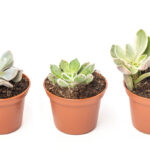 Low-Maintenance Succulents: Finding the Least Demanding Varieties
Low-Maintenance Succulents: Finding the Least Demanding VarietiesNative African succulents are a fantastic addition to any garden, offering a diverse array of stunning and hardy plant species. With their unique adaptations and low-maintenance nature, these plants are perfect for both beginner and experienced gardeners. So why not explore the world of native African succulents and bring a touch of African beauty to your own garden?
Find out how to grow these hardy plants in your own backyard
If you're an avid gardener looking to add some unique and low-maintenance plants to your collection, native African succulents are a perfect choice. These plants not only bring a touch of exotic beauty to your garden but also thrive in a variety of climates and require minimal care.
Why choose native African succulents?
Native African succulents are renowned for their adaptability and ability to withstand harsh conditions. They have evolved to survive in arid environments, making them ideal for regions with limited rainfall or hot summers. Their unique structures, such as fleshy leaves and stems, enable them to store water efficiently, allowing them to endure long periods of drought.
Moreover, native African succulents come in a wide range of stunning shapes, colors, and textures, making them a delight to behold. From the iconic Aloe vera with its medicinal properties to the striking Crassula ovata (Jade Plant) with its plump, shiny leaves, there's a succulent for every taste and preference.
Growing native African succulents
When it comes to cultivating native African succulents, it's important to replicate their natural habitat as closely as possible. Here are some essential tips to help you get started:
- Choose the right location: Most native African succulents prefer bright, indirect sunlight. Find a spot in your garden that receives at least six hours of sunlight a day. If you live in a colder climate, consider planting them in containers so you can bring them indoors during winter.
- Provide well-draining soil: Succulents thrive in well-draining soil that prevents waterlogging. Mix regular potting soil with coarse sand or perlite to create a suitable growing medium.
- Water sparingly: Native African succulents are adapted to survive with little water. Allow the soil to dry out completely between waterings, and be careful not to overwater them, as this can lead to root rot.
- Fertilize occasionally: While succulents don't require frequent fertilization, a diluted, balanced fertilizer can provide them with essential nutrients during the growing season.
- Protect from frost: Some native African succulents can't tolerate freezing temperatures. If you live in a frost-prone area, consider covering your plants or moving them indoors when the temperature drops.
By following these guidelines, you'll be able to create a thriving garden filled with beautiful and resilient native African succulents. Remember to research the specific care requirements of each succulent species you choose to ensure their optimal growth and longevity.
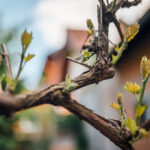 Discover Diverse Succulents with Branching Growth Patterns
Discover Diverse Succulents with Branching Growth PatternsSo, why not embrace the beauty and durability of native African succulents? With their unique traits and ability to withstand various conditions, they are sure to be a standout addition to your garden!
Learn about the unique characteristics of each species and their native habitats
Native African succulents are a fascinating group of plants that are known for their diversity and hardiness. These plants have adapted to survive in the harsh conditions of their native habitats, making them excellent choices for gardeners looking for low-maintenance and resilient species.
1. Aloe Vera (Aloe barbadensis)
Native Habitat: Aloe Vera is native to the arid regions of North Africa.
Aloe Vera is one of the most well-known succulents and is highly valued for its medicinal properties. It thrives in hot and dry conditions and requires minimal watering. This plant has thick, fleshy leaves that store water, making it ideal for dry gardens or xeriscaping.
2. Euphorbia tirucalli (Pencil Cactus)
Native Habitat: Pencil Cactus is native to Southern Africa.
The Pencil Cactus is a unique succulent with thin, pencil-like stems that grow upright. It is highly drought-tolerant and can survive in a variety of soil conditions. However, caution should be exercised as the sap of this plant can be toxic and cause skin irritation.
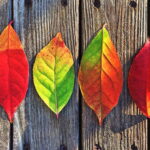 Discover the Stunning Succulent Plants with Rainbow-Colored Leaves
Discover the Stunning Succulent Plants with Rainbow-Colored Leaves3. Lithops (Living Stones)
Native Habitat: Lithops are native to the arid regions of Southern Africa.
Lithops are aptly named "Living Stones" as they resemble small stones or pebbles. These succulents have evolved to blend in with their rocky surroundings as a form of camouflage. They are known for their unique leaf structures and vibrant colors. Lithops require well-draining soil and prefer bright sunlight.
4. Sansevieria trifasciata (Snake Plant)
Native Habitat: Snake Plant is native to West Africa.
The Snake Plant is a popular indoor succulent known for its ability to purify the air. It has long, upright leaves that are typically dark green with light green markings. Snake Plants are highly adaptable and can survive in a variety of light and temperature conditions, making them suitable for novice gardeners.
5. Stapelia (Carrion Flower)
Native Habitat: Stapelia is native to Southern Africa.
The Carrion Flower is an intriguing succulent that produces unique star-shaped flowers. While the flowers may have an unpleasant odor resembling rotting flesh, they attract flies for pollination. Stapelia prefers well-draining soil and requires bright light to thrive.
- Native African succulents are diverse in terms of appearance, growth habits, and habitat preferences.
- These plants have developed unique adaptations to survive in arid and harsh environments.
- They are an excellent choice for water-wise gardening and can add interest and beauty to any garden or indoor space.
- Remember to provide these succulents with the appropriate amount of light, soil, and water to ensure their optimal growth and health.
Discover the wonders of native African succulents and bring their beauty and resilience into your garden today!
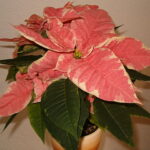 Exploring the Diversity: Succulents in Mixed Genus Categories
Exploring the Diversity: Succulents in Mixed Genus CategoriesDiscover the beauty and resilience of African succulents in your garden
African succulents are a hidden gem in the world of gardening. With their unique shapes, vibrant colors, and incredible adaptability, these plants are a must-have for any garden enthusiast. Whether you're an experienced gardener or just starting out, adding native African succulents to your collection will bring a touch of exotic beauty to your outdoor space.
The Diversity of African Succulents
One of the most fascinating aspects of African succulents is their incredible diversity. From the spiky and cone-shaped Aloe polyphylla to the compact and rosette-like Haworthia cooperi, there is a wide range of species to choose from. Each succulent has its own unique characteristics, making them a captivating addition to any garden.
Not only do African succulents come in various shapes and sizes, but they also display an array of stunning colors. From deep green and vibrant red to soft purple and sunny yellow, these plants offer a palette of colors that will enhance the visual appeal of your garden.
The Hardy Nature of African Succulents
African succulents are renowned for their ability to thrive in harsh conditions. These plants have evolved to survive in arid and semi-arid regions, making them incredibly hardy and drought-tolerant. If you live in an area with limited water resources or a climate with hot summers, these succulents are the perfect choice for your garden.
Their ability to store water in their leaves and stems allows them to withstand long periods without rainfall, making them low-maintenance plants that require minimal watering. This makes African succulents an ideal option for busy gardeners or those who are new to gardening.
How to Incorporate African Succulents in Your Garden
There are numerous ways you can incorporate African succulents into your garden. Here are a few ideas to get you started:
 Exploring the Possibility: Can Succulents Really Have Black Flowers?
Exploring the Possibility: Can Succulents Really Have Black Flowers?- Create a succulent rock garden: Arrange different species of African succulents on a bed of rocks to create a visually striking and low-maintenance garden.
- Design a succulent border: Plant a row of African succulents along the edges of your garden beds or pathways to add a unique and eye-catching border.
- Display them in containers: Plant African succulents in decorative pots or containers and place them on your patio or balcony for a stunning display.
Remember to choose a well-draining soil mix and provide your succulents with adequate sunlight to ensure their optimal growth and health.
African succulents offer a wealth of beauty, diversity, and resilience that can transform any garden into a vibrant and unique oasis. Whether you're a seasoned gardener or a beginner, these plants are sure to captivate you with their stunning colors and unique forms. So, why not take a step into the world of African succulents and discover the wonders they can bring to your garden?
Create a diverse and vibrant garden with these native African succulents
Why choose native African succulents?
Native African succulents are not only beautiful additions to any garden, but they also offer numerous benefits. These plants have adapted to the harsh and arid conditions of their natural habitat, making them incredibly hardy and drought-tolerant. By choosing native African succulents, you can create a low-maintenance garden that thrives in various climates.
The diversity of native African succulents
One of the most remarkable aspects of native African succulents is their incredible diversity. From the spiky and dramatic Aloe species to the compact and colorful Lithops, there is a wide range of choices to suit any garden style. These plants come in a variety of shapes, sizes, and colors, allowing you to create a visually stunning and unique garden.
Hardy and adaptable garden companions
Native African succulents are known for their resilience and ability to adapt to different environments. Whether you live in a hot and dry climate or a more moderate one, these plants will thrive. Their ability to store water in their leaves allows them to withstand periods of drought, making them ideal for low-water landscaping.
Easy care and low maintenance
One of the biggest advantages of native African succulents is their easy care and low maintenance requirements. These plants are generally self-sufficient and require minimal attention. As long as they receive sufficient sunlight and well-draining soil, they can thrive with little water and minimal fertilization.
 Unveiling the Leafy Secrets of Succulents: Exploring Their Diversity
Unveiling the Leafy Secrets of Succulents: Exploring Their DiversityChoosing the right native African succulents for your garden
When selecting native African succulents for your garden, consider the specific conditions of your environment. Some species prefer full sun, while others can tolerate partial shade. Additionally, take into account the mature size of the plants and ensure they have enough space to grow. Research the care requirements of each species to ensure you can provide the necessary conditions for their success.
Native African succulents offer a beautiful and diverse selection of plants to enhance your garden. Their hardy nature, adaptability, and low maintenance requirements make them an excellent choice for both experienced and novice gardeners. So, why not discover the wonders of native African succulents and create a stunning and resilient garden?
Enhance your garden with low-maintenance and water-wise plants
Native African succulents are a perfect addition to your garden if you're looking for low-maintenance and water-wise plants. These diverse and hardy species are not only beautiful but also have unique adaptations that make them well-suited for various climates and conditions.
Why choose native African succulents?
Native African succulents have evolved to survive in harsh and arid environments, making them incredibly resilient and low-maintenance. They have developed specialized water storage tissues, such as fleshy leaves and stems, which allow them to store water during rainy seasons and endure long periods of drought. This unique adaptation means that they require minimal watering, making them ideal for those who want to conserve water or live in areas with limited rainfall.
Diverse and beautiful species
The world of native African succulents is incredibly diverse, with a wide range of species to choose from. Whether you prefer spiky and architectural plants like Aloe polyphylla or prefer the soft and rounded leaves of Haworthia cooperi, there is a succulent to suit every taste and style. From the striking colors of Echeveria elegans to the intricate patterns of Lithops, these plants can add a unique and eye-catching element to any garden.
Hardy and adaptable
Native African succulents have proven their resilience over centuries, adapting to survive in different climates and conditions. Their ability to store water and tolerate extreme temperatures makes them suitable for a wide range of environments, from hot deserts to cool mountain regions. Whether you live in a dry and sunny area or a cooler and more humid climate, there is a succulent species that can thrive in your garden.
 Best Low-Light Cactus & Succulents for Indoor Spaces
Best Low-Light Cactus & Succulents for Indoor SpacesLow-maintenance gardening
One of the biggest advantages of native African succulents is their low-maintenance nature. These plants require minimal care, making them perfect for busy individuals or those who are new to gardening. With their ability to store water, they can survive periods of neglect, making them forgiving if you forget to water them occasionally. Additionally, they are generally resistant to pests and diseases, reducing the need for constant monitoring and treatments.
Native African succulents are not only visually appealing but also offer practical benefits for gardeners. Their unique adaptations, diverse species, and low-maintenance nature make them an excellent choice for those seeking to enhance their garden with water-wise and resilient plants. So why not add some native African succulents to your garden and enjoy the beauty and ease they bring?
Enjoy the stunning colors and shapes of these African succulents
If you're a plant enthusiast looking to add some unique and eye-catching species to your garden, look no further than native African succulents. These plants not only boast a wide array of stunning colors and shapes but are also known for their hardiness and ability to thrive in various environments. Whether you're a beginner gardener or an experienced horticulturist, African succulents are perfect for adding a touch of exotic beauty to your landscape.
Diversity at its finest
African succulents offer an incredible diversity in terms of their appearance. From the striking rosette formations of the Aloe genus to the distinctive cylindrical stems of the Euphorbia family, you'll find an assortment of shapes, sizes, and textures within this plant group. Some succulents have thick, fleshy leaves while others have spiky or hairy surfaces, making them visually captivating and highly desirable for collectors.
The color palette of African succulents is equally impressive. You'll encounter species with vibrant shades of green, ranging from lime to emerald, as well as those with shades of red, purple, and even blue. Some succulents even have variegated leaves, displaying mesmerizing patterns that add a touch of whimsy to any garden or indoor space.
Hardy and adaptable
One of the reasons why African succulents have gained popularity among gardeners worldwide is their exceptional hardiness and adaptability. These plants have evolved to withstand the harsh conditions of their native habitats, which often include hot climates, poor soil quality, and long periods of drought. As a result, they have developed various mechanisms to store water in their leaves, stems, or roots, making them resilient and able to survive with minimal care.
 Exploring Succulents: Discovering Flower-Like Varieties
Exploring Succulents: Discovering Flower-Like VarietiesWhether you live in a dry desert region or a temperate climate, African succulents are a great choice for your garden. With their ability to tolerate a wide range of temperatures and soil conditions, they can thrive in both outdoor gardens and indoor settings. Additionally, their low maintenance requirements make them an ideal choice for busy gardeners or those who are new to plant care.
Adding African succulents to your garden
If you're eager to incorporate these stunning plants into your garden, there are a few things to keep in mind. African succulents prefer well-draining soil, so make sure to add sand or perlite to your potting mix to ensure proper drainage. They also require plenty of sunlight to maintain their vibrant colors and compact growth, so choose a location that receives at least six hours of direct sunlight per day.
When it comes to watering, it's crucial to strike a balance. While African succulents can tolerate dry conditions, they still need regular watering during the growing season. However, it's important to avoid overwatering, as this can lead to root rot and other issues. Allow the soil to dry out completely between waterings, and reduce watering frequency during the dormant period.
- Choose a well-draining soil mix
- Provide ample sunlight
- Water sparingly, allowing the soil to dry out
- Trim back any dead or damaged foliage
- Fertilize sparingly during the growing season
By following these simple guidelines, you'll be well on your way to creating a thriving garden filled with the vibrant beauty of African succulents. Don't be afraid to experiment with different species and arrangements to create a unique and visually captivating landscape that will be the envy of all your gardening friends!
Support conservation efforts by growing native African succulents
Succulents are a popular choice among garden enthusiasts for their unique and eye-catching appearance. While many people are familiar with common succulent varieties like aloe vera or jade plants, there is a whole world of fascinating succulents waiting to be discovered.
If you are looking to add some diversity to your garden while supporting conservation efforts, consider growing native African succulents. These plants not only bring a touch of exotic beauty to your landscape but also play a vital role in preserving the fragile ecosystems they come from.
Diversity of Native African Succulents
The continent of Africa is home to an extensive range of succulent species, each boasting its own unique characteristics and adaptations. From the spiky aloes of South Africa to the fleshy euphorbias of Madagascar, there is a succulent to suit every taste and gardening style.
A Guide to the Most Common Types of Succulents and Care TipsNative African succulents come in various sizes, shapes, and colors, making them a versatile choice for any garden design. Whether you prefer compact rosettes, towering cacti-like forms, or cascading vines, you can find a succulent species from Africa that fits your aesthetic preferences.
Hardiness of Native African Succulents
One of the biggest advantages of growing native African succulents is their incredible hardiness. These plants have evolved to withstand harsh conditions, including drought, high temperatures, and poor soil quality. As a result, they are well-suited to thrive in a wide range of climates and require minimal maintenance.
By choosing native African succulents for your garden, you are not only reducing the need for excessive watering and fertilization but also creating a sustainable and low-maintenance landscape. Their ability to endure challenging environments makes these succulents an excellent choice for busy gardeners or those living in regions with unpredictable weather patterns.
Supporting Conservation Efforts
By growing native African succulents, you are actively contributing to conservation efforts. Many succulent species from Africa are threatened by habitat destruction, climate change, and illegal poaching. By cultivating these plants in your garden, you are helping to preserve their genetic diversity and protect them from extinction.
Moreover, growing native African succulents can also create awareness about the importance of biodiversity and conservation. By sharing your gardening experiences and knowledge, you can inspire others to appreciate and protect these unique plants.
Growing native African succulents not only adds a touch of exotic beauty to your garden but also supports conservation efforts. With their diverse forms and remarkable hardiness, these plants are sure to captivate any gardener while promoting sustainability and awareness.
If you are a fan of succulent plants and want to explore a new and exciting collection for your garden, look no further than native African succulents. These plants not only add a touch of exotic beauty to any landscape but also boast incredible diversity and resilience.
 Dormant Succulents: Which Varieties Hibernate in Winter?
Dormant Succulents: Which Varieties Hibernate in Winter?Native African succulents have adapted to the harsh conditions of their environment, making them incredibly hardy and low-maintenance. Whether you are a seasoned gardener or just starting out, these plants are perfect for adding a unique touch to your outdoor space.
Why choose native African succulents?
There are several reasons why native African succulents are an excellent choice for your garden:
- Diversity: Native African succulents come in a wide range of shapes, sizes, and colors. From the spiky Aloe vera to the compact Crassula ovata (Jade Plant), there is a succulent for every preference and style.
- Hardiness: African succulents have evolved to withstand extreme weather conditions, including drought and intense heat. This makes them perfect for regions with hot summers or limited water resources.
- Low maintenance: These plants are known for their ability to thrive with minimal care. They require infrequent watering and can tolerate neglect, making them ideal for busy gardeners or those with limited time for plant care.
- Unique aesthetic: Native African succulents bring a touch of exotic beauty to any garden. Their striking forms and vibrant colors make them stand out among other plants, creating a captivating focal point in your outdoor space.
Popular native African succulents
Here are a few popular native African succulents that you might consider adding to your collection:
- Sansevieria trifasciata (Snake Plant): Also known as the Snake Plant or Mother-in-law's Tongue, this succulent is known for its long, upright leaves with variegated patterns. It is incredibly resilient and can tolerate a wide range of light conditions.
- Euphorbia tirucalli (Pencil Cactus): This succulent resembles a cluster of green pencils and adds a unique architectural element to any garden. It is drought-tolerant and can grow up to 30 feet tall, making it a striking addition to your landscape.
- Haworthia: The Haworthia genus includes a variety of small succulents with rosette-shaped leaves. They are perfect for indoor gardens or as part of a succulent arrangement.
Whether you choose to grow these popular African succulents or explore other species, incorporating native African succulents into your garden is a sure way to create a visually stunning and low-maintenance landscape. Share your love for these unique plants with fellow garden enthusiasts and enjoy the beauty they bring to your outdoor space!
Experience the joy of cultivating and caring for these unique garden species
Native African succulents are a fascinating group of plants that have gained popularity among garden enthusiasts in recent years. With their striking appearances and ability to thrive in various climates, these diverse and hardy species offer a unique and rewarding gardening experience.
Why choose native African succulents?
There are several compelling reasons to consider adding native African succulents to your garden:
- Uniqueness: Native African succulents come in a wide range of shapes, sizes, and colors, making them stand out among other garden plants.
- Adaptability: These succulents are known for their ability to adapt to different environments and climates, making them suitable for gardens around the world.
- Low maintenance: Native African succulents are known for their resilience and ability to thrive in harsh conditions. This means they require less water and care compared to other garden plants.
- Drought tolerance: Many native African succulents have evolved to survive in arid regions, making them an excellent choice for water-wise gardening.
Popular native African succulents for your garden
Here are some popular native African succulents that you can consider adding to your garden:
- Aloe vera: Known for its medicinal properties, Aloe vera is a versatile succulent that can be grown both indoors and outdoors.
- Euphorbia obesa: This unique succulent, also known as the "Baseball Plant," features a round, ball-like shape that adds a touch of quirkiness to any garden.
- Haworthia: With its rosette-shaped leaves and intricate patterns, Haworthia is a stunning succulent that is easy to care for.
- Sansevieria: Also known as the "Snake Plant" or "Mother-in-law's Tongue," Sansevieria is a popular choice for its air-purifying properties and ability to thrive in low-light conditions.
- Sedum: Sedums are a diverse group of succulents that come in various sizes and colors. They are known for their ability to create dense ground cover and attract pollinators.
By incorporating these native African succulents into your garden, you can create a visually stunning and low-maintenance oasis that will surely impress both you and your visitors. So why wait? Start exploring the world of native African succulents and embark on a rewarding gardening journey today!
Frequently Asked Questions
1. What are native African succulents?
Native African succulents are plant species that naturally occur in various regions of Africa. They have adapted to survive in arid and semi-arid environments and store water in their leaves, stems, or roots.
2. Are native African succulents easy to grow?
Yes, native African succulents are generally easy to grow. They are hardy plants that require minimal care and can withstand drought and heat. However, proper sunlight, well-draining soil, and occasional watering are necessary for their optimal growth.
3. Can native African succulents be grown indoors?
Yes, many native African succulents can be grown indoors. They can thrive in bright, indirect light conditions and are suitable for growing in pots or containers. Just ensure to provide them with the right soil mix and occasional outdoor exposure for better health.
4. What are some popular native African succulent species?
Some popular native African succulent species include Aloe vera, Euphorbia trigona, Sansevieria trifasciata, and Haworthia spp. These plants are known for their unique shapes, striking colors, and ability to thrive in a wide range of growing conditions.
If you want to read more articles similar to Discover Native African Succulents: Diverse & Hardy Garden Species!, you can visit the Varieties and Colors category.

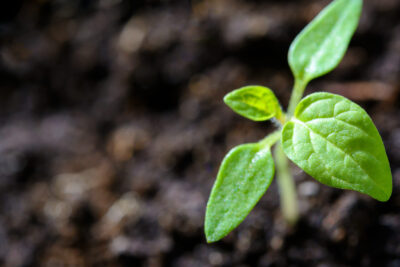
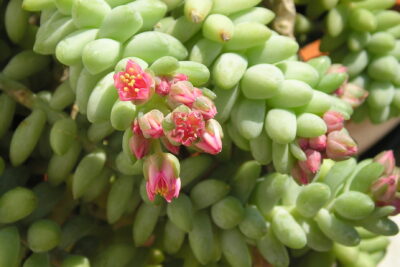



You Must Read